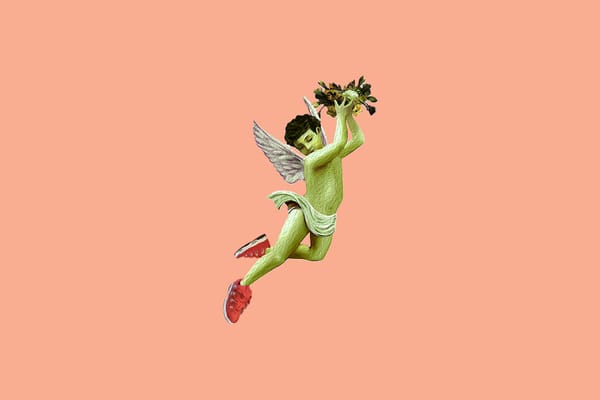It's not you, it's our limited synergies
Plus: RIP Alltimers (officially), RIP Supreme (eventually), Michael Mackrodt is fishing, Jhancárlos González Ortiz is clocked in, and more.

The definitive weekly ranking and analysis of all the skateboarding and other things online that I cannot stop consuming and how it makes me feel, personally.

A good run
Rank: 1
Mood: 🌹
What was rumoured a few weeks back is now official: Alltimers is calling it a day.
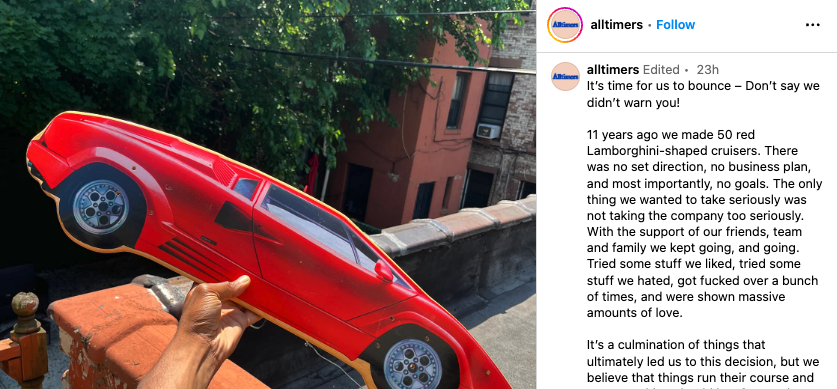
In an Instagram post on Tuesday, the long-running brand shared a short, sweet, and gracious farewell to their fans, team, and skate shops. As for why they're packing it in, it seems to be what eventually happens to most creative projects and businesses. While I imagine there are financial realities at play, as there always are, more so, it sounds like it was just time.
It’s a culmination of things that ultimately led us to this decision, but we believe that things run their course and not everything should last forever (we made three tees called the Alltimers Forever tee). Energy runs out, people change and that’s cool. It doesn’t take away from anything we achieved or the relationships we built.
Running a business is hard work. Running a business that feels personally and creatively fulfilling is even harder. Kudos to them for not riding Alltimers into the ground, a soulless, empty thing, because that's easy.
And hey, 11 years is nothing to sneeze at. A good run is one where the people in charge know when to stop. If you run forever, you lose the chance to look back and appreciate where you've been and why you were running in the first place.
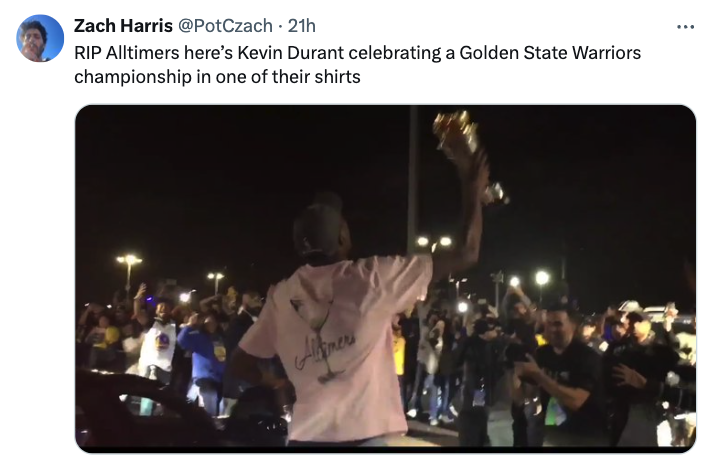

Fill the boat
Rank: 1
Mood: 🎣
In this week's edition on the Monday Links, Quartersnacks shared Michael Mackrodt and Patrik Wallner's latest entry into their long-running Fishing Lines travel series, this one taking place in Hong Kong and published by Pocket, also noting that the first episode came out roughly 14 years ago. Starting from there, Mackrodt, Wallner, and other collaborators have done episodes in New York City (2010), Bangkok (2011), Guangzhou (2012?), Paris (2015), West Africa (2016), Tunisia (2016), Paris again (2018), Taiwan (2021), Portugal (2023), and now Hong Kong (2024). And that's just what I could find online.
Mackrodt worked on these individual Fishing Lines video parts in between filming for other projects for his sponsors, including a number of Element videos, a whole whack of Wallner's Visual Travelling projects, and a seemingly unending stream of solo parts. It's an unparalleled level of breadth and productivity for a professional skateboarder, and as Mackrodt inches toward his mid-40s, he's still going strong.
These last couple of years, he's also been trying to get his footwear and apparel company, Fishing Lines, off the ground, an effort he describes on its website.
15 years ago I received my first sample shoe but somehow didn’t have the balls to fulfill my idea. Now, years later with the beginning of the pandemic, I received a call from my former boss and main sponsor that they’d quit my contract from one day to another. I decided to put my last money together and try to make my own shoes.
Starting a shoe brand is a tough route to take, but if anything, it continues to illustrate how committed Mackrodt is to maintaining skateboarding as a career. He's proven to be more than willing to do the work. Here's hoping he's able to fill the boat.

Dead generation
Rank: N/A
Mood: ⚰️
While much of the world was preoccupied with some notable near-death news over the weekend, the deaths of several other notable people still, surprisingly, managed to break through. Richard Simmons, Dr. Ruth Westheimer, Shannon Doherty, and the writer and journalist Evan Wright all left this plane in one way or another in recent days.
Admittedly, it's cultural guesswork, a societal level of feeling around in the dark to make a claim like this; still, it's hard to imagine the resonance of the modern mid-tier celebrity will ring as loud when their fates are eventually met. This is a morbid thought experiment, but as what's left of the monoculture continues to break apart and silo, like some Tower of Babel parable with unskippable pre-roll ads, it doesn't seem reasonable to expect many contemporary figures to find purchase in the collective conscious like Simmons or Westheimer or Doherty did thanks to the overwhelming power and consolidation of the media era they thrived in (Wright's books certainly made an impact, just on a less public scale).
That could speak to the influence "traditional" media (television, film, print) still holds over the digital and social platforms that gnaw away at our attention or, at least, to their heyday of guiding pop culture hegemony. However, as time moves on and those institutions continue to fall, their influence will go with them, meaning there's a chance that once the Millennial and up generations kick the bucket, the streamers all merge and collapse, and the ad-riddled remains of the social platforms reign supreme over our twilight kingdom, the passing of a TikTok gross-out recipe influencer might also make it onto the front page of The New York Times, just below the news of the attempted assassination of the former leader of a global superpower.
But, if we're being honest, that seems unlikely. While the conversation around the fragmentation of popular culture can seem trite at times, there is something to it. Social media has allowed for the flourishing of micro-celebrities in niche corners of all areas of interest, from fashion, music, and politics to skateboarding (remember Versace Plug?) — stars of fiefdoms only visible behind the veil of "for you" algorithms. That development has dovetailed noxiously with our already toxic combination of societal malaise and our species' historical premium on attention. To be known is to have succeeded in this merciless world; it doesn't matter for what.
It's not that this was a novel approach; it's that the environment around it has changed. To be immortalized beyond an intracultural moment, to not perish as a meme on the wayward ice flow of your specific interest, and to have your name splashed above the fold when you die, some recognize that it's easier to do so by taking the life of someone else rather than living your own.

Dying breed
Rank: 1
Mood: 😈
It would take some Olympic-level mental gymnastics to watch Jhancárlos González Ortiz's Clocked In video part and declare it "not good." This stunt-heavy style of skateboarding is not for everyone, but it requires such a high level of skill and ability that it is deserving of respect, even if watching it doesn't get people excited to skate like it used to. In a way, it reflects a fascinating evolution of skateboarding's collective taste.
Coming of age as a skateboarder in the late '90s and early aughts, González's approach was presented in the available media as simply The Way A Person Should Skate. I'm sure, like many people reading this, I also spent years jumping down stairs and rails with visions of myself as a Jamie Thomas, Bastien Salabanzi, and, yes, Billy Marks. However, at the time, it felt almost shameful to admit that the video parts I truly enjoyed the most were those of the Mike Rusycks and Dan Drehobls of the world — guys doing interesting stuff without putting themselves in mortal danger.
Of course, González is also doing his stuff. That stuff just feels anachronistic at a time when everyone, everywhere, is skating in whatever way they want — not focused solely on risking life and limb for a video project that will be forgotten by the time the work week's done (anecdotally, not one person in my bubble, whether online or in person, has mentioned Clocked In).
In a way, that makes González's efforts all the more impressive. He doesn't need to nollie off a two-storey tall container into an incredibly steep schoolyard embankment to impress us. He doesn't have to switch-backside-lipslide a monstrous 17-stair handrail to remain relevant. He does it because he wants to. He's testing the limit of what is possible on a skateboard out of some deep desire to do so, not in a Max Palmer does-a-noseslside-work-at-this-angle way, but in an I-could-die-if-I don't-land-this way.
The cohort that González belongs to, which only looks for the bigger and further, appears to be shrinking but is still as potent as ever. It may not be for everyone anymore, but by god, are these bastards good.

It's not you, it's our limited synergies
Rank: 1.5 billy
Mood: 💸
Rumours started circulating in May that Supreme's parent company, VF Corp, was looking to offload the market-defining streetwear brand, which I wrote about at the time:
These rumblings come at an uncertain moment for Supreme. Once a darling in the fashion and skateboarding world, massive investment by war-profiteering private equity firm the Carlyle Group in 2017 would lead to Supreme's $1 billion valuation and eventual $2.1 billion sale to VF Corp in 2020. The former resulted in significant public criticism, and the latter only made things worse, turning a brand whose ethos and business model could be described as "detached scarcity" into one that needed to keep investors happy by only ever making more money. A business typically satiates that hunger for endless growth by selling more goods or services. Scarcity helped build Supreme's mystique, which helped make Supreme not just "cool" but a financially viable company at a manageable scale. These were fates immediately at odds.
On top of that, being owned by the same (currently flagging) conglomerate that has Vans, Timberland, and Jansport under its umbrella doesn't scream "authentic streetwear." Or as one anonymous “investment banker who works in the fashion space" told WWD, “The brand got too big to continue to be cool.” Which, yeah, exactly.
This week, that shroud of speculation parted when it was announced that Supreme was purchased for $1.5 billion by "sunglass conglomerate EssilorLuxottica, the owner of Oakley, Ray-Ban and myriad other brands and eyewear retail chains," according to Shop Eat Surf.
That's not only a significant dip from the $2.1 billion VF Corp paid for Supreme at the tail end of 2020, but if there was previously concern about brand authenticity, being under the banner of the conglomerate that owns Sunglass Hut isn't going to help. On the other side, despite the loss, VF Corp can now ease its considerable debt load and free itself from, as VF CEO Bracken Darrell would put it in a statement, the "limited synergies" between VF and Supreme. Those "limited synergies" seem like something the company should've considered before spending a couple of billion, but that is a genuinely hilarious way to frame a tanking relationship.
Speaking of limited synergies, in the same Shop Eat Surf report, Nate Pund, the managing director and global head of the Active Lifestyle banking team at Houlihan Lokey, pulled no punches, saying he was "stunned" by the development and that "I am amazed by EssilorLuxottica doing this deal and at that price... They clearly must have identified an ability to take the Supreme brand into the eyewear category and feel that can justify the very hefty price as there [is] no other way to look at this. There are no synergies nor shared [skill] sets in the fashion apparel space. I wish them well as this looks like a big challenge from my humble perspective.”
To echo Pund, good luck. To be fair, I imagine an exclusive Supreme x Oakley drop at your local Sunglass Hut would do numbers, though.

Some things to consider:

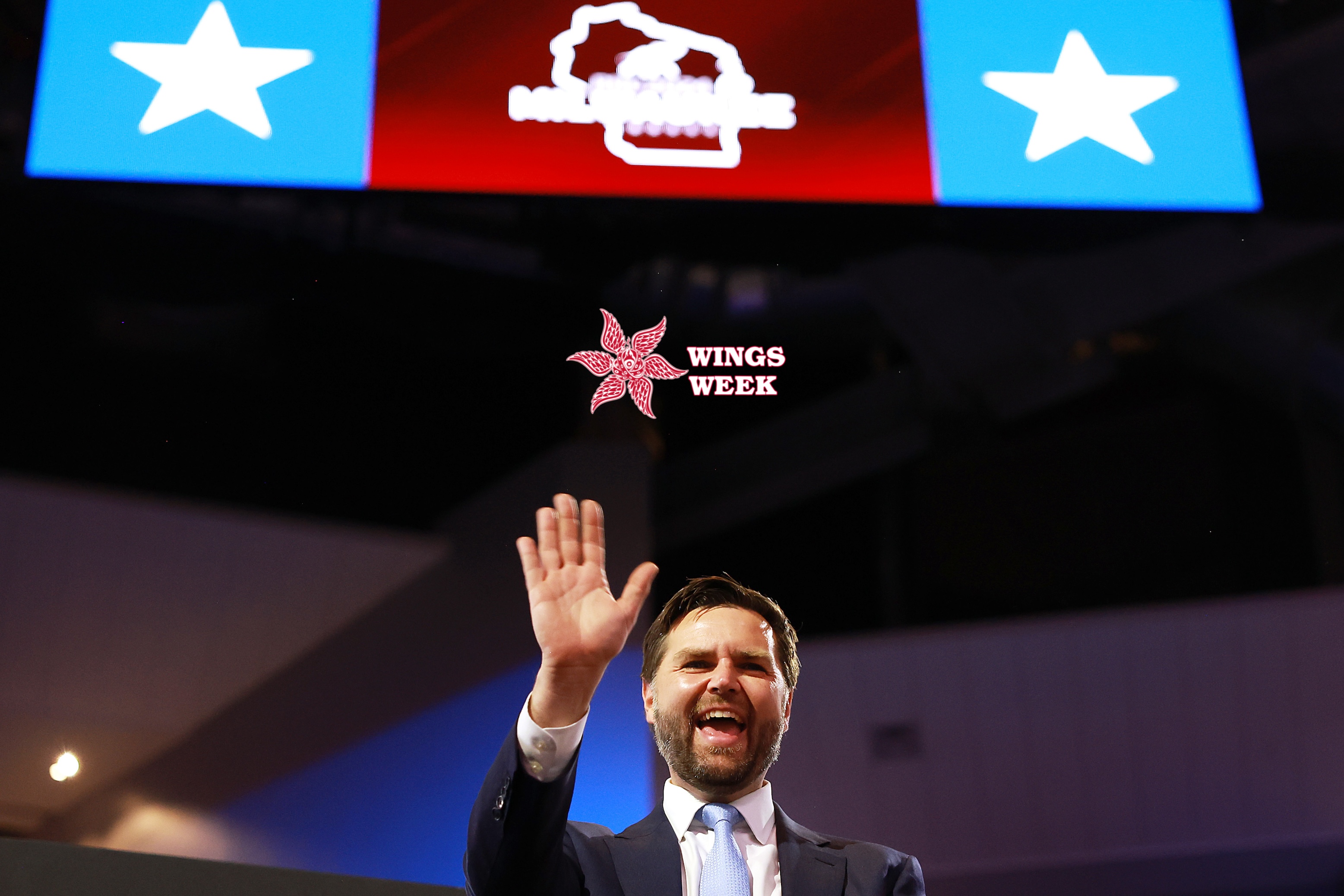
American Conservatism, as an intellectual movement, is just like this. It is incoherent because it can afford to be, but also because it has never really been about anything but the rich mediocrities who bankroll it keeping what they have. There is no intellectual or ethical foundation upon which to build; there is nothing that it is actually trying to do beyond make it impossible for anything ever to be different.
Good thing:

Another good thing: Deborah Stoll's new book, Drop In, dropped on Tuesday.

Hey, another good thing: The University of Sydney gave their resident sociologist and all-around rad human, Indigo Willing, some shine.

Another Olympic skateboarding thing: I talked to Fay De Fazio Ebert, her mom, Andy Anderson, and Annie Guglia about the pressures of competing on the Olympic stage for the Toronto Star.
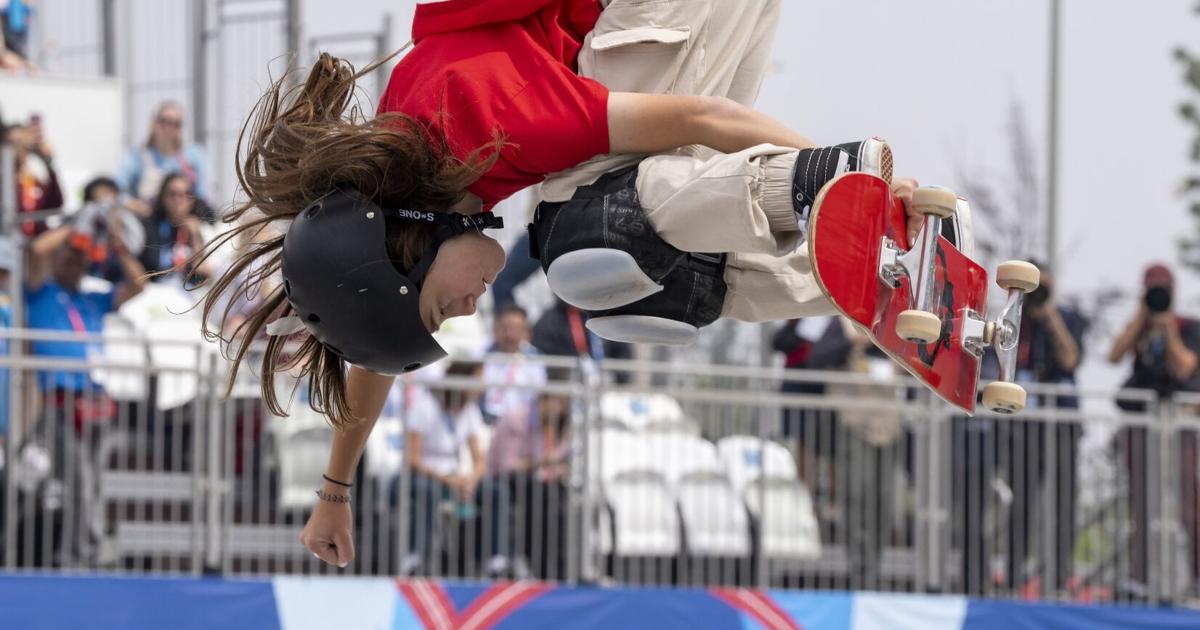
An "I'm actually really good at skateboarding" thing: Gifted Hater getting to the heart of Tim Pool's whole deal, which is that to his absolute core, he is a snivelling, desperate, irredeemable kook.
Until next week… if you don't land your trick this session, well, you might not land it during the next one either. Or the one after that. Truth be told, there's a chance you'll never land it. But — and this is meant in absolute seriousness — at least you tried.


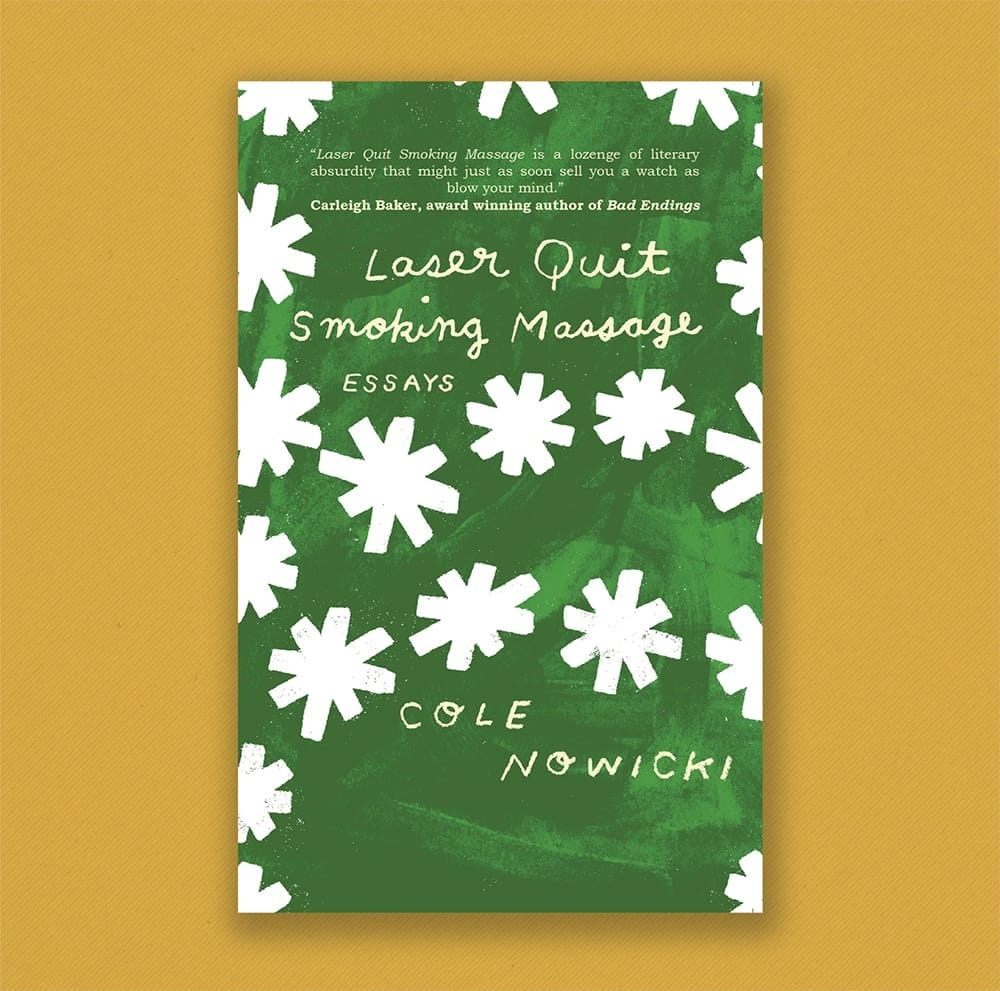
Laser Quit Smoking Massage
NEWEST PRESS, available April 1, 2024
--------------------------------
My new collection of essays is available now. I think you might like it. The Edmonton Journal thinks it's a "local book set to make a mark in 2024." The CBC called it "quirky yet insightful." lol.
Book cover by Hiller Goodspeed.
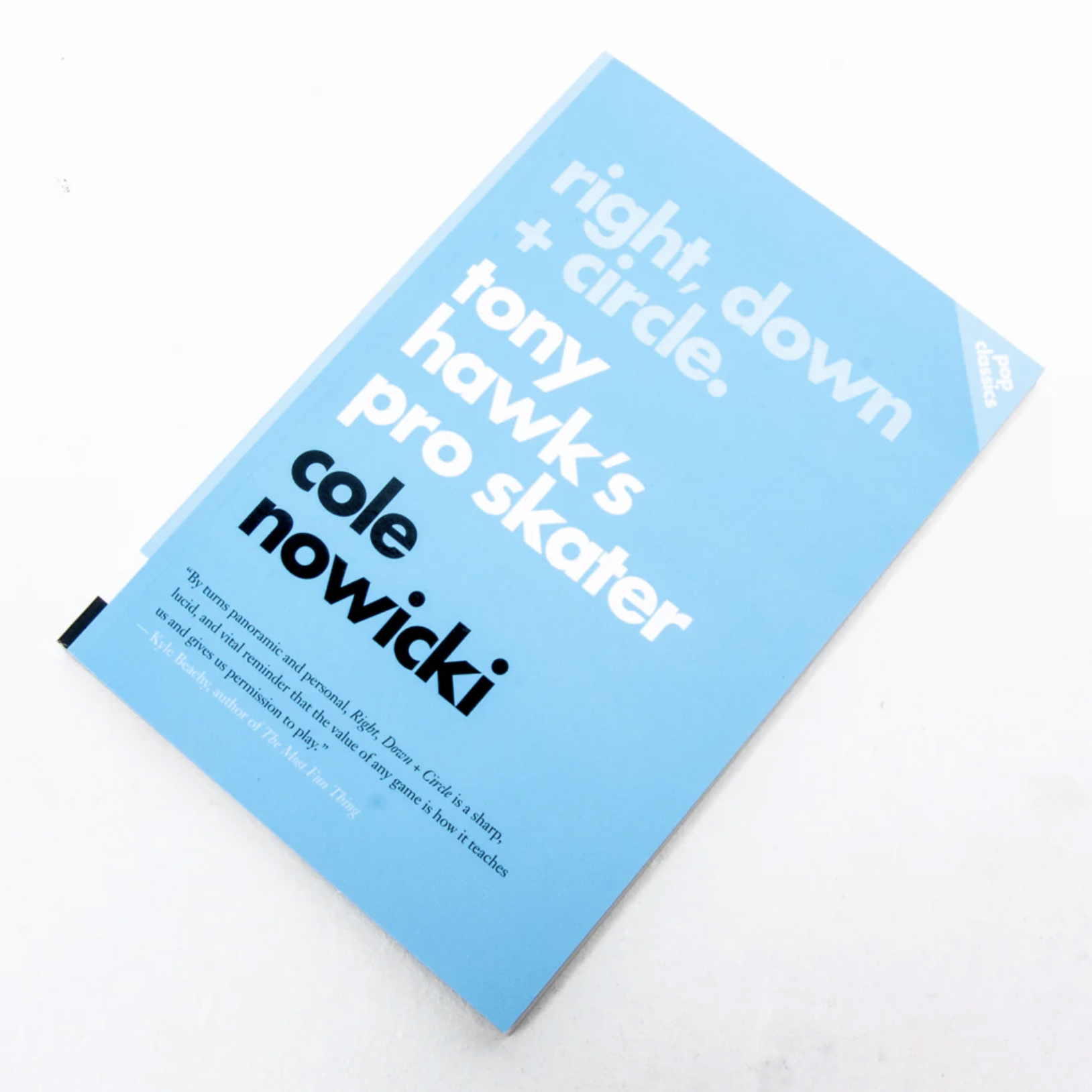
Right, Down + Circle
ECW PRESS
--------------------------------
I wrote a book about the history and cultural impact of Tony Hawk’s Pro Skater that you can find at your local bookshop or order online now. I think you might like this one, too.
Here’s what Michael Christie, Giller Prize-nominated author of the novels Greenwood and If I Fall, If I Die, had to say about the thing.
“With incisive and heartfelt writing, Cole Nowicki unlocks the source code of the massively influential cultural phenomenon that is Tony Hawk’s Pro Skater, and finds wonderful Easter-eggs of meaning within. Even non-skaters will be wowed by this examination of youth, community, risk, and authenticity and gain a new appreciation of skateboarding’s massive influence upon our larger culture. This is my new favorite book about skateboarding, which isn’t really about skateboarding — it’s about everything.”
Photo via The Palomino.










